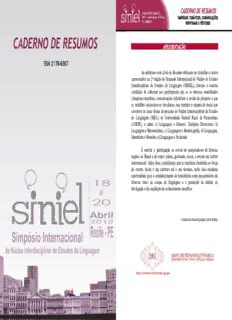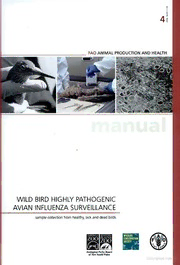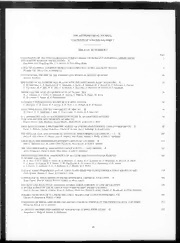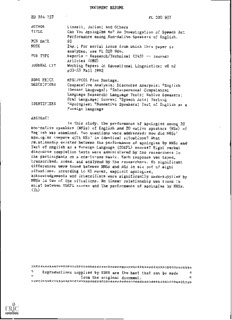
Nursing: Health Education and Improving Patient Self-Management: Intervention Mapping for Healthy Lifestyles PDF
Preview Nursing: Health Education and Improving Patient Self-Management: Intervention Mapping for Healthy Lifestyles
Nursing: Health Education and Improving Patient Self-Management Intervention Mapping for Healthy Lifestyles Second Edition Barbara Sassen 123 Nursing: Health Education and Improving Patient Self-Management Barbara Sassen Nursing: Health Education and Improving Patient Self-Management Intervention Mapping for Healthy Lifestyles Second Edition Barbara Sassen University of Applied Sciences Utrecht, The Netherlands ISBN 978-3-031-11254-6 ISBN 978-3-031-11255-3 (eBook) https://doi.org/10.1007/978-3-031-11255-3 © The Editor(s) (if applicable) and The Author(s), under exclusive license to Springer Nature Switzerland AG 2018, 2023 Original Dutch edition published by BSL, AK Houten, 2022 This work is subject to copyright. All rights are solely and exclusively licensed by the Publisher, whether the whole or part of the material is concerned, specifically the rights of reprinting, reuse of illustrations, recitation, broadcasting, reproduction on microfilms or in any other physical way, and transmission or information storage and retrieval, electronic adaptation, computer software, or by similar or dissimilar methodology now known or hereafter developed. The use of general descriptive names, registered names, trademarks, service marks, etc. in this publication does not imply, even in the absence of a specific statement, that such names are exempt from the relevant protective laws and regulations and therefore free for general use. The publisher, the authors, and the editors are safe to assume that the advice and information in this book are believed to be true and accurate at the date of publication. Neither the publisher nor the authors or the editors give a warranty, expressed or implied, with respect to the material contained herein or for any errors or omissions that may have been made. The publisher remains neutral with regard to jurisdictional claims in published maps and institutional affiliations. This Springer imprint is published by the registered company Springer Nature Switzerland AG The registered company address is: Gewerbestrasse 11, 6330 Cham, Switzerland In the clouds, for Josephine Let perpetual light shine, for my brother Richard Preface The book in brief and studying using programmatic assessment* In order to be able to use programmatic assessment, an assignment has been added to each paragraph. So, you start reading the content followed by processing and applying the content using the assessments. Prior to the first chapter, an over- view is included in which the assignments are displayed by subject. This overview also shows which assignments together can be used as programmatic assessment. In Chap. 1, we discuss the different concepts of health, including what is health actually and what is one’s own professional view on health*. In Chap. 2, we focus on health determinants by which health and health prob- lems can be analyzed and understood. We discuss various health models, including Lalonde*, ICF*, and chronic care model*. In Chap. 3, health indicators* are discussed; these provide insight into the health status of the population; they are the starting point of (epidemiological) research, they are the patient outcomes of care, and they are important for understanding international health policy*. In Chap. 4, we elaborate on prevention, from universal, primary prevention* to care-related prevention*, and discuss screening and the goal tree of prevention* and individual and collective prevention*. In Chap. 5, we discuss prevention and patient/person-centered care, principles of patient-centered care*, informed consent*, shared decision-making* (with its myths*), importance of intra- and interdisciplinary collaboration*, offering of pre- vention from the perspective of care*, prevention and interweaving of cure and care*, and P4-medicine. In Chap. 6, we discuss prevention and health behavior more specifically. We discuss health behavior*—lifestyle or self-management behavior—and prevention and complexity of health behavior*, voluntariness*, paternalism, and prospective responsibility, providing risk assessment* and health-related reasons*. In Chap. 7, we elaborate on eHealth, i.e., how eHealth fits into the patient-nurse partnership*, and look at tailoring and telemonitoring. vii viii Preface In Chap. 8, we discuss the prevention umbrella, health protection*, health pro- motion, proto-professionalization, personalized prevention, disease prevention and self-management*, self-management versus symptom management, self- management and psychiatric health problems*, patient involvement*, and health coaching*. In Chap. 9, we discuss the effects of promoting self-management and look at therapy adherence, compliance, and concordance and what this means for health- care professionals*. We discuss the positive effects of promoting self-management such as compliance and adherence, patient participation, shared decision-making*, effective self-management*, well-being, understanding and remembering*, and patient satisfaction*. In Chap. 10, we start with explaining the protocol of intervention mapping, and in the following chapters, we describe specific application assignments with assess- ment criteria. Chapter 10 is about motivating patients to behave healthier, and we describe intervention mapping as a useful planning model for an intervention focused on improving self-management and healthier lifestyles*. In Chap. 11, intervention mapping step 1 is discussed, using the needs assess- ment with the analysis of the health problem*, behavioral analysis* of self- management and/or lifestyle behavior, and environmental analysis*. In Chap. 12, we continue dealing with intervention mapping step 1, along with the study of social-cognitive determinants based on the theory of planned behavior* and the logic model*, to understand “the buttons we have to press” to change health behavior. In Chap. 13, we describe intervention mapping step 2 to clarify the objectives you want to achieve with an intervention, overall goal of the intervention*, perfor- mance objectives*, and change objectives*, displayed in a matrix*. In Chap. 14, intervention mapping step 3 discusses which methods you can use to change self-management and lifestyle behavior, proven effective methods of risk perception*, weighing up of advantages and disadvantages*, increasing resilience and social support*, guided practice*, action planning combined with self- monitoring*, and coping planning combined with relapse prevention*. In Chap. 15, we finally get started on building health intervention by using the methods from the previous step. In intervention mapping step 4, we design the inter- vention on the basis of the model of behavior change* with a practical application of the method in the form of a stepwise training* linked to it per method*. It also discusses the 5As model*, transtheoretical model, or stages-of-change concept only to determine subgroups*, motivational interviewing*, and importance of limited health skills*. Preface ix In Chap. 16, intervention mapping step 5, designing an implementation plan, is clarified, i.e., how to carry out an intervention*. We discuss how to focus on imple- mentation and implementation mapping using the implementation matrix* and tools in an intervention. In Chap. 17, we discuss the final step of intervention mapping. We describe how to write an evaluation plan*, analyzing whether the self-management or lifestyle behavior becomes more favorable once the intervention has been carried out. In Chap. 18, we describe the obstacles patients encounter when changing their self-management or lifestyle behavior*. In Chap. 19, the book concludes with a look at the healthcare professional as a self-management and lifestyle coach, describing the obstacles experienced by nurs- ing professionals themselves and the opportunities, followed by a stepwise train- ing* regarding the methods by which they offer self-management and lifestyle support. In Chap. 20, the book concludes with a discussion of the nursing process and the links to health education and disease prevention. This second edition has undergone a major update and incorporates the latest insights on health education and prevention. In this second edition, assignments have been added in line with programmatic assessment. These assignments can be used after studying the text. The colors in the table below show which assignments can be combined. x Preface Preface xi
The list of books you might like

The Mountain Is You

The Sweetest Oblivion (Made Book 1)

Believe Me

As Good as Dead
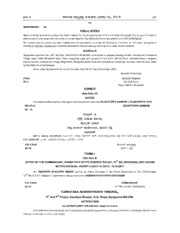
Karnataka Gazette, 2014-01-16, Part-5
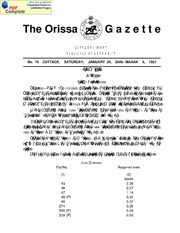
Odisha Gazette, 2006-01-07, No. 78
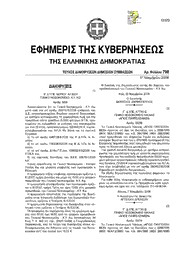
Greek Government Gazette: Part 7, 2006 no. 798
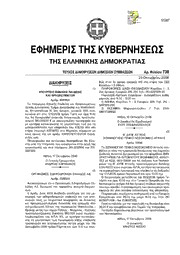
Greek Government Gazette: Part 7, 2006 no. 738
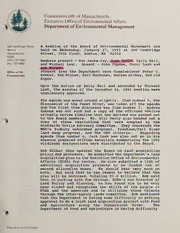
Department of Environmental Management Board Minutes

Dune

The Legend of the siete infantes de Lara : Refundición toledana de la crónica de 1344 version
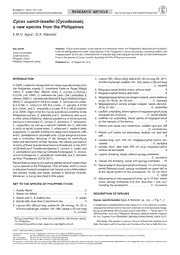
Cycas sancti-lasallei (Cycadaceae), a new species from the Philippines

Pedro Figari 2006 El Crimen De La Calle Chana

Annual report : 2005/2006

Star Trek and the Politics of Globalism

Afroasiatic

Anaphylaxis
